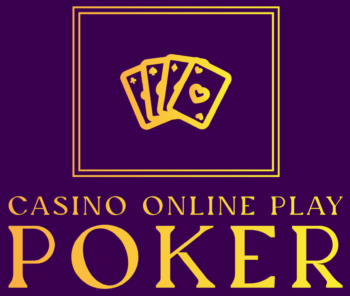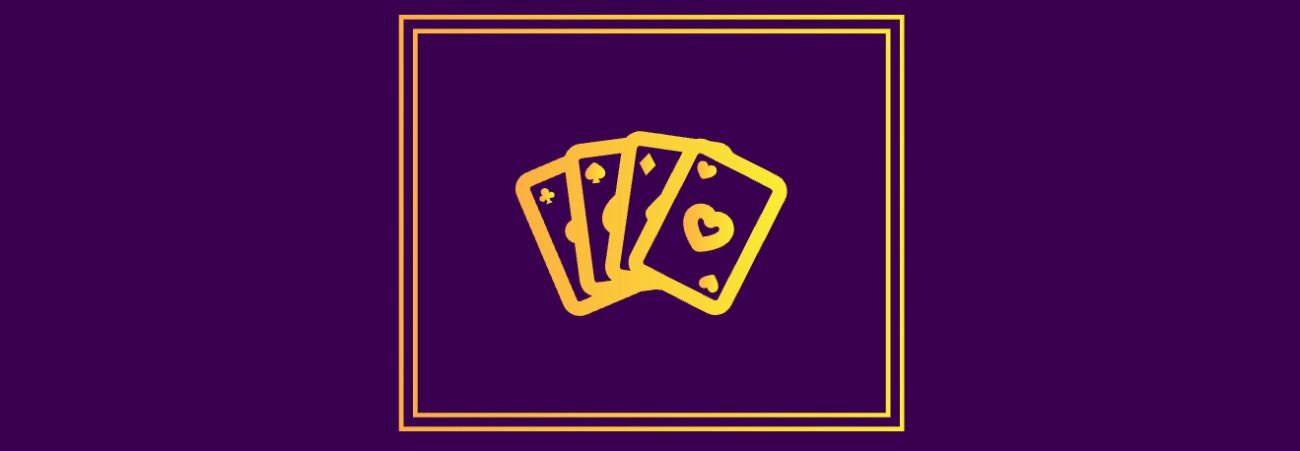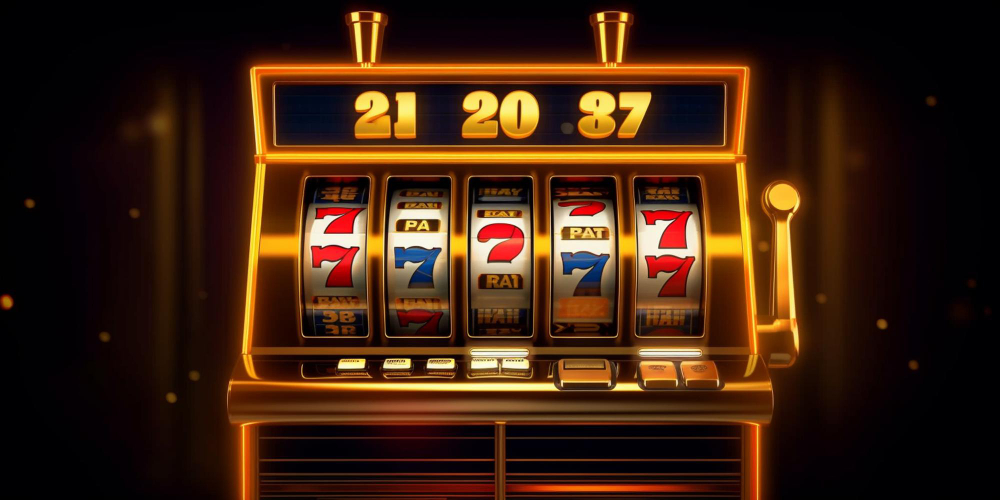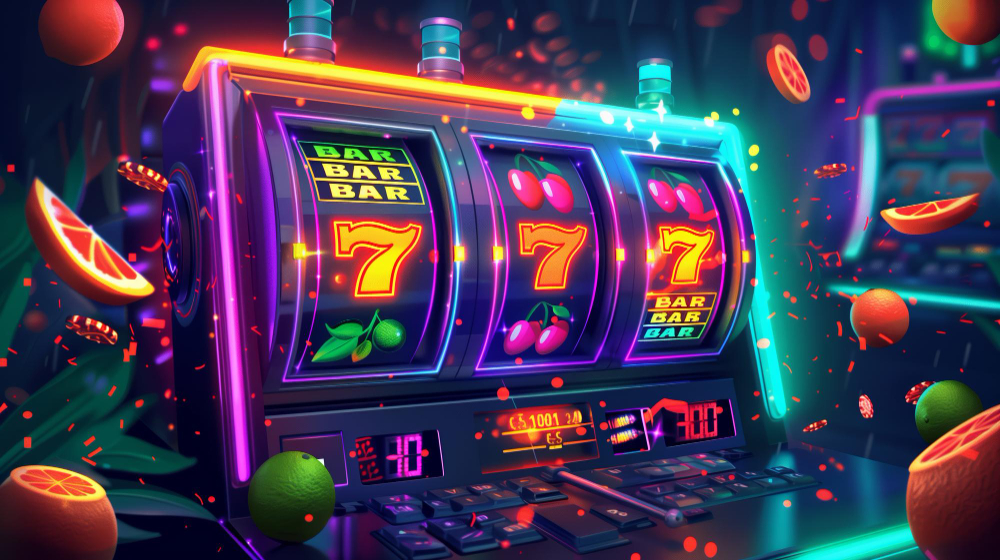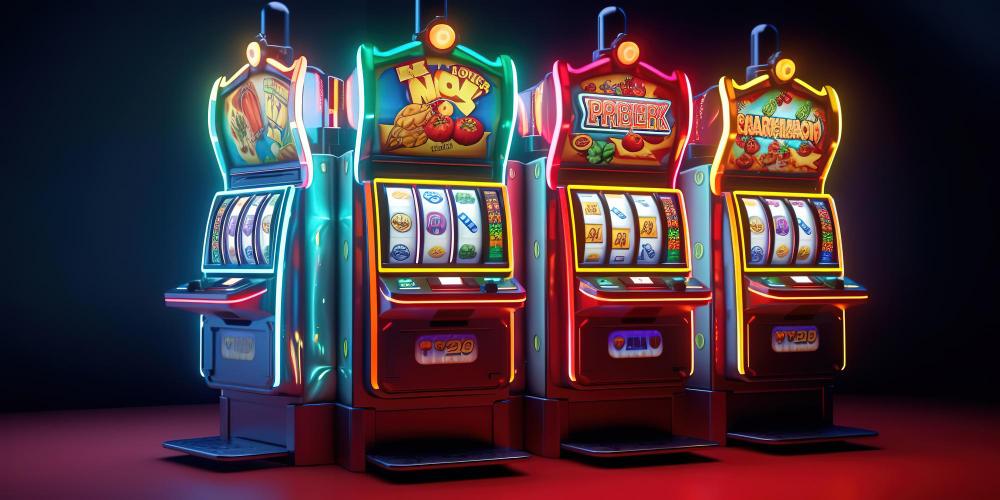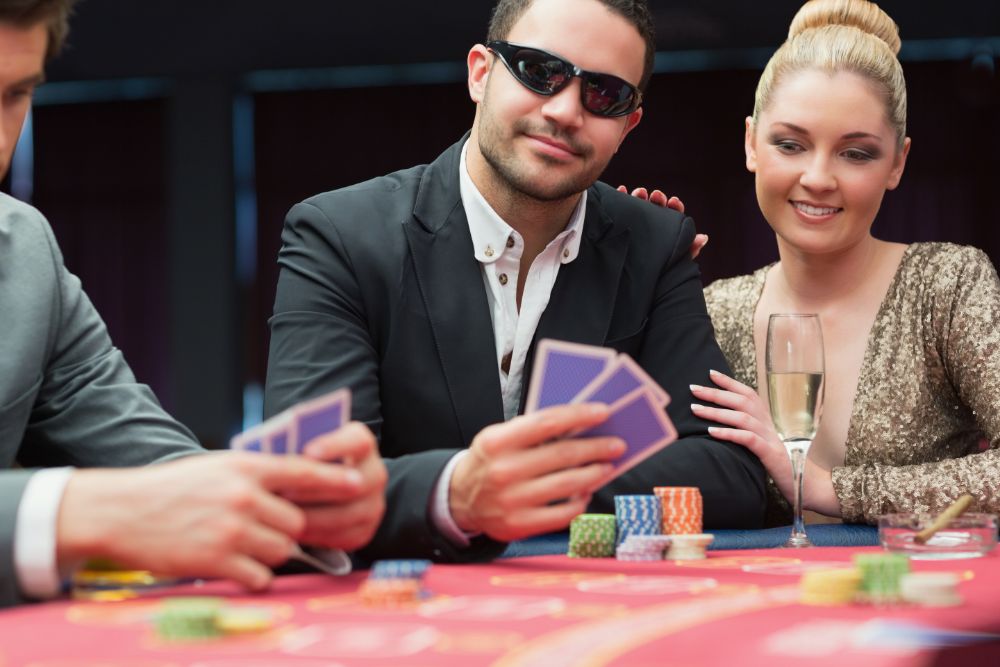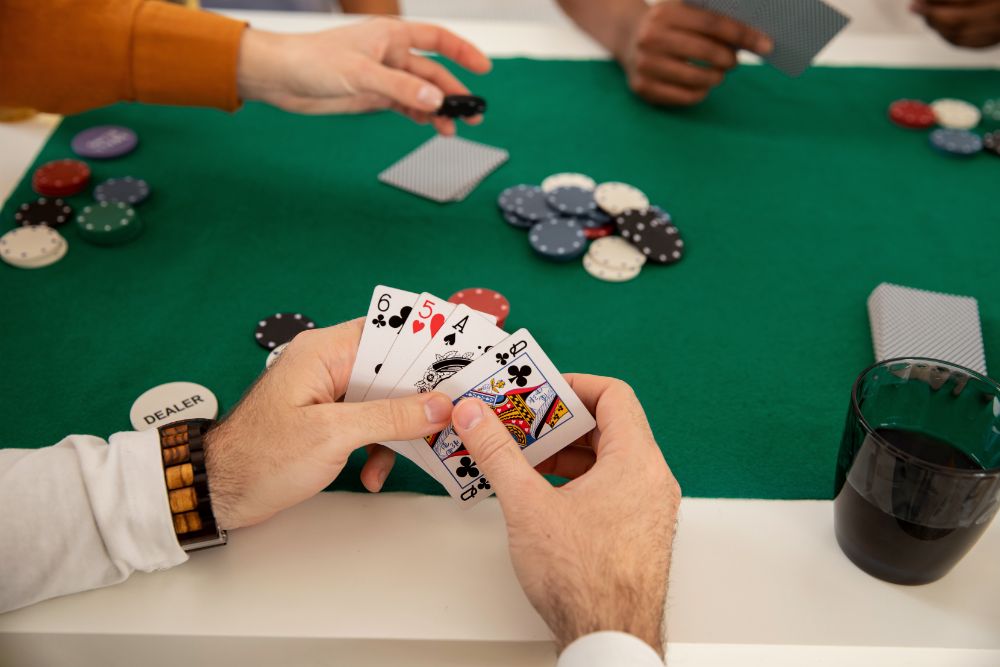The house edge is a critical concept in casino gaming, representing the statistical advantage the casino maintains over players in any given game.
It is typically expressed as a percentage, indicating the average amount a player can expect to lose relative to their initial bet over time.
Different casino games have varying house edges:
- Blackjack: 0.5% to 2%, depending on the specific rules and player skill level
- Roulette: 2.7% for European roulette, 5.26% for American roulette
- Slot machines: Generally 2% to 15%, varying widely between establishments
- Craps: 1.41% on pass/don’t pass bets, higher for other bet types
- Baccarat: 1.06% on banker bets, 1.24% on player bets
Understanding the house edge allows players to make informed decisions about which games to play and how to manage their bankroll.
Games with lower house edges generally offer better long-term prospects for players, though short-term variance can still lead to wins or losses.
Strategies to mitigate the house edge include:
- Choosing games with more favorable odds
- Learning and implementing optimal strategies for skill-based games like blackjack
- Taking advantage of casino promotions and comps
- Setting strict loss limits and adhering to them
- Avoiding side bets and proposition bets, which often carry higher house edges
It is important to note that while these strategies can improve a player’s chances, they cannot eliminate the house edge entirely.
The mathematical advantage always remains with the casino in the long run.
Key Takeaways
- The house edge is the casino’s statistical advantage over players, ensuring long-term profitability despite short-term outcomes.
- Different games have varying house edges; for example, blackjack can be as low as 0.5% while American roulette is around 5.26%.
- Understanding a game’s rules and payout structure is essential for calculating its house edge accurately.
- Managing the house edge involves choosing bets with lower edges and practicing effective bankroll management.
- Slot machines’ house edge is influenced by their payback percentage, which determines the long-term return to players.
What Is the House Edge?
The house edge is a statistical advantage that casinos maintain over players in gambling games. It represents the average percentage of each bet that the casino expects to retain over extended play.
This concept is fundamental to understanding casino profitability and player odds.
The house edge varies among different games and even within game variations.
For example, American roulette typically has a higher house edge than European roulette due to the additional double zero on the wheel.
Blackjack, when played with optimal strategy, often offers one of the lowest house edges in casino games.
Mathematically, the house edge ensures that casinos will profit in the long term, regardless of short-term fluctuations.
If a game has a 5% house edge, the casino anticipates retaining $5 for every $100 wagered, on average.
This calculation is based on a large number of bets over time, not individual gaming sessions.
Players can use knowledge of the house edge to make informed decisions about game selection and bankroll management.
Games with lower house edges generally offer better odds for players, although the casino maintains an advantage in all cases.
It’s important to note that the house edge doesn’t predict short-term results, as individual sessions can deviate significantly from statistical expectations.
Understanding the house edge helps players set realistic expectations and budget appropriately for casino play.
It underscores the fact that gambling should be viewed as entertainment rather than a reliable method of generating income.
Calculating the House Edge
The calculation of house edge provides insight into the statistical advantage a casino holds over players in various games.
The house edge represents the average percentage loss a player can expect per bet over time. To calculate it, one must first understand the game’s rules and payout structure.
For example, in American roulette, a single number bet pays 35:1, but there are 38 possible outcomes. The probability of winning is 1/38.
The formula for house edge is: (Probability of Winning Payout) – Probability of Losing. Applied to roulette: (1/38 35) – (37/38) = 0.0526 or 5.26%.
More complex games like blackjack require consideration of additional factors such as the number of decks and specific rule variations.
The house edge for blackjack typically ranges from 0.5% to 1% when optimal strategy is employed.
Accurate calculation of house edge is crucial for both players and casino operators. For players, it provides a realistic expectation of long-term outcomes.
For casinos, it ensures profitability while offering fair gameplay. Understanding house edge calculations can inform decision-making in game selection and betting strategies.
Why the House Edge Matters
The house edge is a fundamental concept in casino operations, representing the statistical advantage the casino maintains over players in any given game.
It’s expressed as a percentage of each bet that the casino expects to retain over the long run. Understanding this concept is essential for informed gambling decisions.
Different casino games have varying house edges. For instance, blackjack typically offers a lower house edge (around 0.5% to 1% with optimal strategy) compared to roulette (2.7% for European roulette, 5.26% for American roulette).
This variation affects a player’s expected return and the longevity of their bankroll.
Knowledge of the house edge allows players to:
- Select games with more favorable odds
- Manage expectations regarding potential wins and losses
- Budget more effectively for gambling activities
- Avoid games with particularly high house edges
It’s important to note that the house edge ensures the casino’s profitability over time. While short-term fluctuations can occur, the law of large numbers dictates that the casino will inevitably profit in the long run.
This mathematical advantage is built into the rules and payouts of each game.
Understanding the house edge can contribute to responsible gambling practices by providing a realistic perspective on the odds of winning. It helps players make informed decisions about their gambling activities and potentially mitigate financial risks associated with casino play.
House Edge in Slot Machines
When you play slot machines, understanding the role of Random Number Generators (RNGs) is crucial.
You’ll also need to grasp the concept of payback percentage and how it affects your potential returns.
Lastly, consider the volatility and risk involved to better manage your expectations and strategy.
Random Number Generators
Random Number Generators (RNGs) are integral to the functioning of slot machines, ensuring unpredictable outcomes for each spin.
These devices generate thousands of numbers per second, with the selection occurring at the precise moment the spin button is activated. This continuous process guarantees the uniqueness of each spin.
The notion of patterns or predictability in slot machine outcomes is unfounded.
RNGs utilize complex algorithms that render each spin independent of previous results, maintaining game fairness. This principle applies to both physical and online slot machines.
A notable characteristic of RNGs is their continuous operation, even when the machine isn’t in use.
This feature eliminates the possibility of timing spins or predicting outcomes based on machine inactivity periods.
It is important to understand that the house edge in slot machines is derived from the game’s design parameters, not from manipulation of the RNG.
The RNG’s role is solely to provide randomness, while the game’s programmed return-to-player percentage and payout structure determine the overall odds.
Comprehension of RNG functionality provides insight into the genuine randomness of slot machine outcomes.
This knowledge can contribute to more informed decision-making when engaging with these games of chance.
Payback Percentage Explained
The concept of payback percentage, also known as return to player (RTP), is a key factor in determining the house edge for slot machines.
Pay!back percentage represents the proportion of money a slot machine returns to players over an extended period. For instance, a slot machine with a 95% payback percentage will, on average, return $95 for every $100 wagered, with the remaining $5 constituting the house edge.
Payback percentage is calculated over a substantial number of spins, typically in the thousands or millions. As a result, short-term outcomes can deviate significantly from the stated percentage.
This long-term calculation means that individual playing sessions may not reflect the overall payback rate.
When selecting a slot machine, considering the payback percentage can be beneficial. Machines with higher RTPs theoretically offer better odds for players over time.
However, it’s important to note that even with a high RTP, the house maintains an advantage due to the inherent design of slot machines.
Casinos often disclose payback percentages, which can be found in game settings, on the casino’s website, or through regulatory reports.
Volatility and Risk
Volatility and risk are key factors in assessing slot machine house edge. Volatility describes the frequency and magnitude of payouts.
High volatility slots typically offer larger but less frequent wins, while low volatility slots provide smaller, more regular payouts. This information is crucial for effective bankroll management and setting realistic expectations.
High volatility slots inherently carry more risk. Although the house edge remains constant, the payout structure can lead to prolonged losing streaks before a significant win occurs.
This pattern can rapidly deplete funds if not managed carefully. Conversely, low volatility slots offer more consistent, smaller wins, reducing financial fluctuations.
Understanding these dynamics aids in game selection based on individual risk tolerance. Players comfortable with extended periods of losses and capable of withstanding financial swings may prefer high volatility slots.
Those seeking more consistent, modest rewards may find low volatility machines more suitable.
It is essential to maintain strict budget control and practice responsible gaming habits.
This approach ensures optimal enjoyment while minimizing potential financial risks. Selecting games aligned with personal risk tolerance and financial capabilities is crucial for a balanced and sustainable slot machine experience.
House Edge in Blackjack
Blackjack’s house edge typically ranges from 0.5% to 1%, making it one of the casino games with the lowest advantage for the house.
This percentage translates to an expected loss of 50 cents to one dollar for every $100 wagered over time.
Implementing basic strategy is essential for minimizing the house edge.
This approach involves making optimal decisions based on the player’s hand and the dealer’s upcard.
Key elements of basic strategy include splitting aces and eights, while refraining from splitting tens.
Table rules significantly impact the house edge.
Games where the dealer stands on soft 17 are generally more favorable to players compared to those where the dealer hits.
The number of decks used also affects the house edge, with fewer decks typically offering a lower advantage to the house.
Single and double-deck games are therefore preferable when available.
Players should be aware that while these strategies can reduce the house edge, they don’t eliminate it entirely.
Consistent application of basic strategy and careful selection of game conditions are necessary to maximize one’s chances of success in blackjack.
House Edge in Roulette
The house edge in roulette is determined by the wheel structure and bet types.
European roulette wheels have 37 pockets, including a single zero, resulting in a house edge of approximately 2.7%. American roulette wheels feature 38 pockets, with an additional double zero, increasing the house edge to about 5.26%.
Bet types influence the house edge while maintaining consistent overall odds. For instance, a straight-up bet on a single number and a bet on red or black have the same house edge but different winning probabilities.
A single number bet offers a 35 to 1 payout with a 1 in 37 (European) or 1 in 38 (American) chance of winning.
The house edge ensures the casino’s long-term advantage. In European roulette, for every $100 wagered, the expected return to the player is $97.30, while in American roulette, it’s $94.74.
This difference is attributed to the additional double zero pocket in the American version.
Understanding these factors allows players to make informed decisions. However, it’s important to note that the house edge remains constant over time, regardless of individual betting strategies or short-term outcomes.
Roulette, like all casino games, is designed to provide entertainment while maintaining a statistical advantage for the house.
House Edge in Poker
Poker’s house edge differs fundamentally from games like roulette, as it isn’t built into the game’s structure.
Instead, poker rooms generate revenue through a system called the “rake.” This is a percentage of each pot that the casino collects as a fee for hosting the game. Rake percentages typically range from 2.5% to 10%, varying by casino and stake level.
The rake’s impact on player profitability is significant and warrants careful consideration. Even skilled players who consistently win more hands than they lose must overcome this fee to achieve long-term profitability.
For example, in a $100 pot with a 5% rake, the house removes $5, leaving $95 for the winning player(s). Over numerous hands, this consistent deduction can substantially affect overall earnings.
To minimize the effect of the house edge in poker, players should:
- Be aware of rake structures at different tables and casinos
- Seek out games with lower rake percentages or favorable rake caps
- Take advantage of promotions that may offset rake costs
- Continuously improve poker skills to increase win rates
House Edge in Craps
Craps employs a fixed house edge embedded in its structure, distinguishing it from games like poker. The house edge in craps varies according to the type of bet placed.
The Pass Line bet, a common wager, carries a house edge of 1.41%, meaning the casino statistically retains $1.41 for every $100 wagered.
Different bets in craps have varying house edges. The Field bet has a higher house edge of approximately 5.56%, while Proposition bets, such as Any 7, can reach a house edge of 16.67%.
Understanding the house edge for each bet is crucial as it directly impacts the probability of winning. Craps offers multiple betting options, each with its specific odds and house edge. Familiarity with these factors enables informed decision-making.
While some bets provide more favorable odds than others, the house edge consistently ensures a long-term advantage for the casino. Knowledge of the house edge for each wager facilitates strategic play and promotes responsible gaming.
It is important to note that despite variations in house edge across different bets, the casino maintains an overall advantage. Players should approach craps with a clear understanding of the odds and potential risks associated with each bet.
This knowledge allows for more informed gameplay and helps manage expectations regarding potential outcomes.
Reducing the House Edge
Understanding the house edge in craps is essential for informed betting decisions.
Certain strategies can be employed to potentially reduce the casino’s advantage:
-
Focus on bets with lower house edges:
- Pass Line and Come bets have a house edge of 1.41%
- These bets offer more favorable odds compared to others
-
Utilize odds bets:
- Odds bets have no house edge and pay true odds
- Backing Pass Line or Come bets with odds bets can lower the overall house edge
-
Avoid high house edge bets:
- Big 6 and Big 8 bets have a 9.09% house edge
- Selecting bets with better returns is generally advisable
-
Practice effective bankroll management:
- Set and adhere to betting limits
- Avoid chasing losses
While these strategies may help mitigate the house edge, it’s important to note that the casino always maintains an advantage in the long run.
Craps remains a game of chance, and no strategy can guarantee consistent winnings.
Players should approach gambling responsibly and be prepared for potential losses.
Smart Betting Strategies
To make the most of your bets, you need to focus on bankroll management techniques,
evaluate the odds, and apply risk reduction tactics.
These strategies can help you stay in the game longer and minimize potential losses.
Let’s explore how you can use these methods to improve your betting approach.
Bankroll Management Techniques
Bankroll management is a critical component of responsible gambling practices.
Establishing a budget for gambling activities, separate from essential expenses, is fundamental. This budget should be an amount one can afford to lose without financial hardship.
Setting session limits helps prevent chasing losses, which can rapidly deplete funds.
The 1-3% rule is a commonly recommended strategy. This involves wagering only 1-3% of the total bankroll on a single bet, which serves to mitigate risk and extend playing time.
For instance, with a $1,000 bankroll, individual bets would range from $10 to $30.
Accurate record-keeping is essential for effective bankroll management. Maintaining a detailed log of all gambling activities, including wins and losses, enables the identification of patterns and informed strategy adjustments.
Predetermined win and loss limits are important safeguards. Establishing these limits prior to gambling sessions helps prevent emotional decision-making, which can lead to excessive losses or missed opportunities to secure winnings.
Consistency in betting strategy, regardless of recent outcomes, is crucial.
Increasing bet sizes following a series of wins can lead to poor decision-making influenced by temporary emotional highs.
Implementing these bankroll management techniques promotes more sustainable and controlled gambling practices, potentially enhancing the overall gambling experience while minimizing financial risks.
Odds Evaluation Methods
Odds evaluation methods form a critical component of effective betting strategies.
Comparing odds across multiple bookmakers, a practice known as line shopping, can reveal significant variations and potentially increase value for bettors. This approach allows for the identification of the most favorable odds for a given event.
Understanding implied probability is essential for assessing the value of a bet.
This concept translates betting odds into a percentage, representing the bookmaker’s estimation of an event’s likelihood. For example, odds of 2.00 correspond to an implied probability of 50%. When a bettor’s assessment of an event’s probability exceeds the bookmaker’s implied probability, it may indicate a value betting opportunity.
The Kelly Criterion is a mathematical formula used to determine optimal bet sizing.
This method takes into account both the odds offered and the bettor’s perceived edge. By applying the Kelly Criterion, bettors aim to maximize potential returns while managing risk effectively. However, it’s important to note that this approach assumes accurate probability assessments and requires disciplined bankroll management.
These methods provide a framework for systematic odds evaluation.
However, their effectiveness relies on accurate information and analysis. Successful implementation of these strategies requires consistent application and ongoing refinement based on observed outcomes.
Risk Reduction Tactics
Risk management is an essential component of effective betting strategies.
To mitigate potential losses and optimize winning chances, several tactics can be employed:
-
Budget setting: Establishing a predetermined spending limit helps prevent overspending and reduces the likelihood of chasing losses.
-
Bet diversification: Distributing wagers across multiple events or games minimizes the risk associated with a single outcome.
-
Betting systems: Mathematical approaches like the Kelly Criterion and Martingale System can be utilized to determine optimal bet sizes and manage losses.
However, it’s important to note that no system guarantees success, and the Martingale System, in particular, carries significant risks of substantial losses.
-
Record keeping: Maintaining a log of bets and outcomes enables data-driven decision-making and strategy refinement.
-
Emotional control: Adhering to predetermined strategies and avoiding emotion-based decisions is crucial for maintaining discipline in betting practices.
While these tactics can contribute to more informed betting, it’s important to recognize that gambling inherently involves risk.
No strategy can eliminate the possibility of losses, and responsible gambling practices should always be prioritized.
Conclusion
Understanding the house edge empowers you to make better gambling choices. By knowing how it’s calculated and its impact on different games, you can select those with lower edges and employ smart betting strategies. Don’t forget to practice effective bankroll management to prolong your play and enhance your chances of winning. With this knowledge, you’re better equipped to enjoy gambling responsibly while minimizing potential losses. Now, go ahead and play smart!
